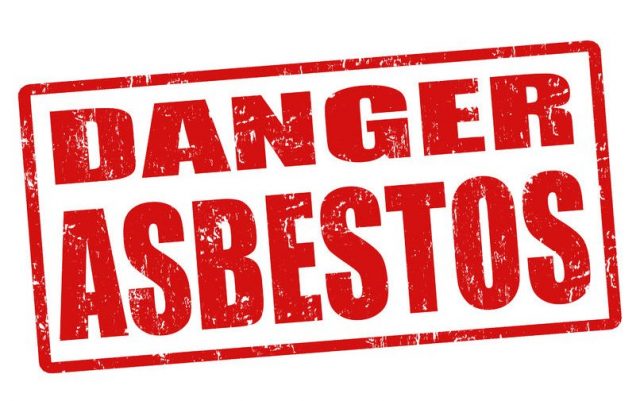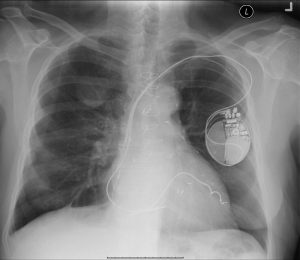Asbestos (from Greek σβεστος meaning “unquenchable” or “inextinguishable”) is a set of six naturally occurring silicate minerals exploited commercially for their desirable physical properties. They all have in common their asbestiform habit, long, (1:20) thin fibrous crystals.
The inhalation of asbestos fibres can cause serious illnesses, including malignant lung cancer, mesothelioma (a formerly rare cancer strongly associated with exposure to asbestos), and asbestosis (a type of pneumoconiosis). Since January 1, 2005, the European Union has banned all use of asbestos and extraction, manufacture and processing of asbestos products.
For environmental samples, one must normally resort to electron microscopy for positive identification. Today, gravimetric and PCM/PLM techniques are employed. However, the latter techniques cannot readily identify the smallest, most hazardous, fibers, because they are limited to PM10 particulate size evaluation, which completely ignores ultrafine particles (UFPs).
Asbestos became increasingly popular among manufacturers and builders in the late 19th century because of its sound absorption, average tensile strength, and its resistance to heat, electrical and chemical damage. When asbestos is used for its resistance to fire or heat, the fibres are often mixed with cement or woven in fabric or mats. Asbestos was used in some products for its heat resistance, and in the past was used on electric oven and hotplate wiring for its electrical insulation at elevated temperature, and in buildings for its flame-retardant and insulating properties, tensile strength, flexibility, and resistance to chemicals.
The first known U.S. workers’ compensation claim for asbestos disease was in 1927. In 1930, the first reported autopsy of an asbestosis sufferer was conducted in the United States and later presented by a doctor at the Mayo Clinic, although in this case the exposure involved mining activities somewhere in South America.
In 1989 the United States Environmental Protection Agency (EPA) issued the Asbestos Ban and Phase Out Rule which was subsequently overturned in the case of Corrosion Proof Fittings v. EPA, 947 F.2d 1201 (5th Cir. 1991). This ruling leaves many consumer products that can still legally contain trace amounts of asbestos. For a clarification of products which legally contain asbestos, read the EPA’s clarification statement.
The EPA has proposed a concentration limit of seven million fibers per liter of drinking water for long fibers (lengths greater than or equal to 5 µm). The Occupational Safety and Health Administration (OSHA), has set limits of 100,000 fibers with lengths greater than or equal to 5 µm per cubic meter of workplace air for eight-hour shifts and 40-hour work weeks.
Asbestos and 9/11
Over 1000 tons of asbestos is thought to have been released into the air during the destruction of the Twin Towers in New York on 9/11. Inhalation of a mixture of asbestos and other toxicants is thought to be linked to the unusually high death rate of emergency service workers from cancer since the disaster. Many thousands more are now thought to be at risk of developing cancer due to this exposure with those who have died so far being only the ‘tip of the iceberg’. Some commentators have criticised authorities for using asbestos in the Towers’ construction.
Litigation
Asbestos litigation is the longest, most expensive mass tort in U.S. history, involving more than 8,400 defendants and 730,000 claimants as of 2002 according to the RAND Corporation, and at least one defendant reported claim counts in excess of 800,000 in 2006.
Current trends indicate that the worldwide rate at which people are diagnosed with asbestos-related diseases will likely increase through the next decade.[89] Analysts have estimated that the total costs of asbestos litigation in the USA alone is over $250 billion.
The federal legal system in the United States has been faced with numerous counts of asbestos related suits, which often included multiple plaintiffs with similar symptoms. The concern with these court cases are the staggering numbers, which in 1999 recorded 200,000 cases pending in the federal court system of the United States.Further, it is estimated that within the next 40 years, the number of cases may increase to 700,000. These numbers help explain how there are thousands of current pending cases.
Recycling and disposal
In most developed countries, asbestos is typically disposed of as hazardous waste in landfill sites.
Asbestos can also be recycled by transforming it into harmless silicate glass. A process of thermal decomposition at 1,000–1,250 °C produces a mixture of non-hazardous silicate phases, and at temperatures above 1,250 °C it produces silicate glass. Microwave thermal treatment can be used in an industrial manufacturing process to transform asbestos and asbestos-containing waste into porcelain stoneware tiles, porous single-fired wall tiles, and ceramic bricks.


















